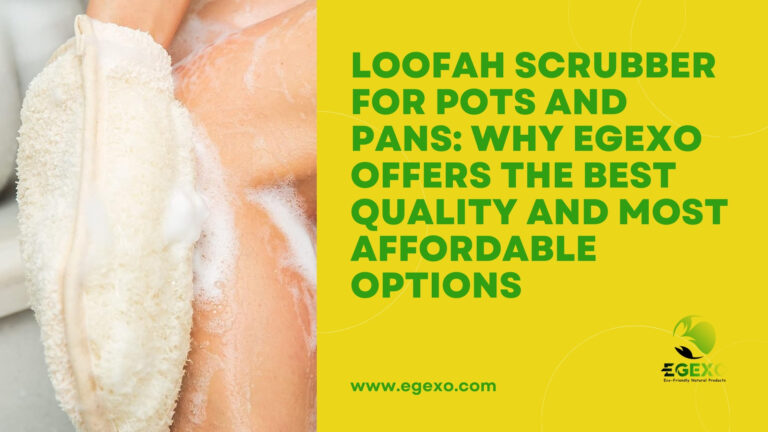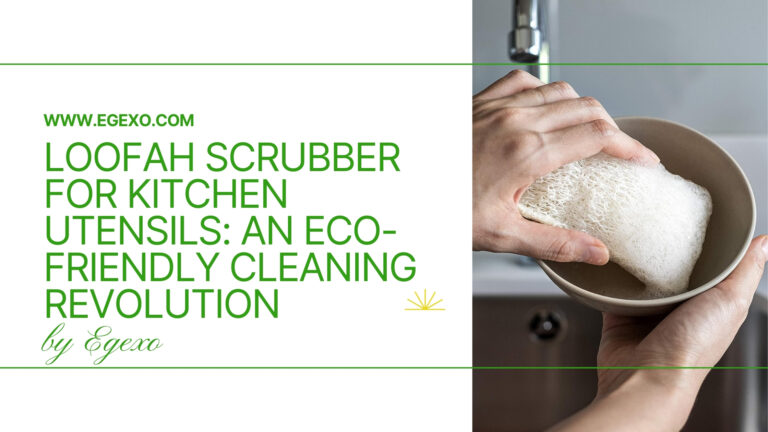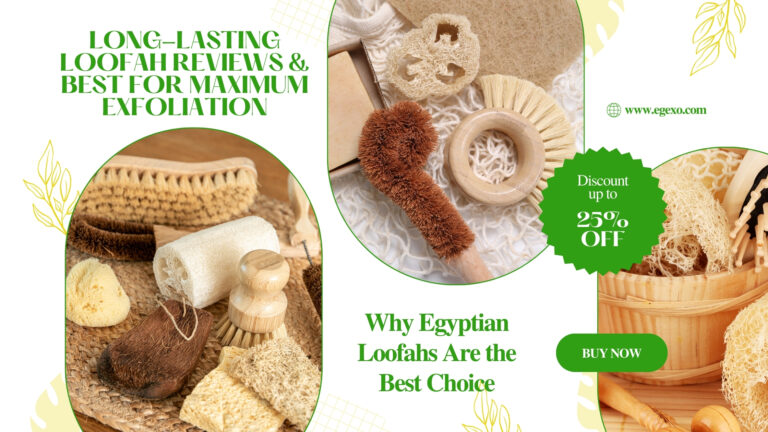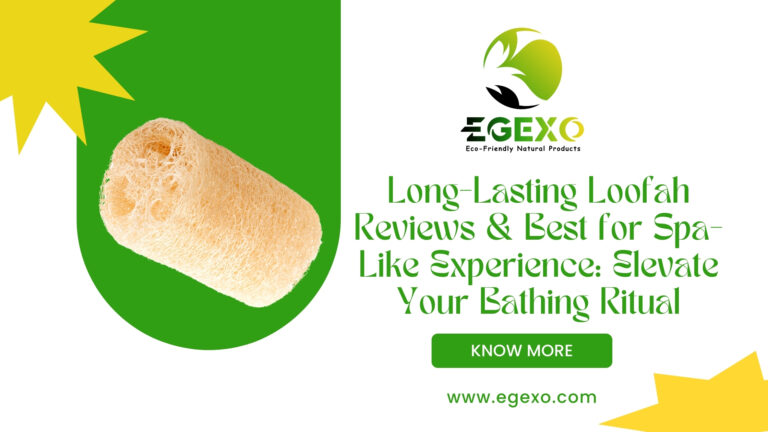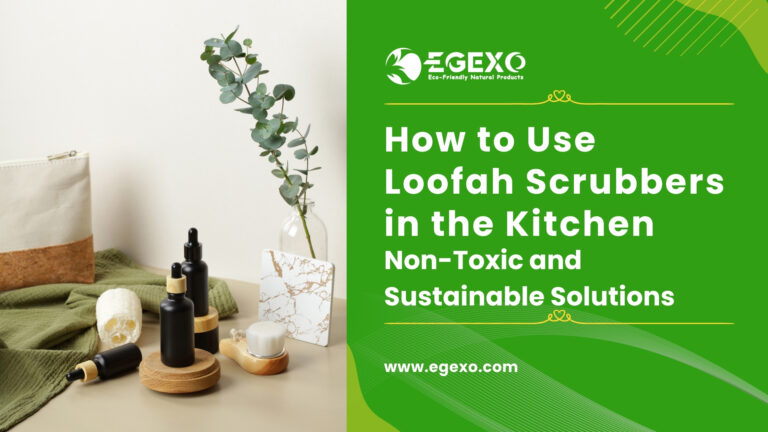From Loofah Vegetables to Bath Sponges: The Story of Egyptian Loofahs
The journey from loofah vegetables in the fields of Egypt to the bath sponges used around the world is a fascinating process of growth, transformation, and meticulous care. For centuries, Egyptians have cultivated sponge gourds, transforming them into the high-quality loofah sponges that are prized for their superior texture, durability, and eco-friendliness. In this blog post, we will explore the cultivation and transformation of loofah vegetables into bath sponges, highlighting the superiority of Egyptian loofahs and their role in the global market. We’ll also discuss how EGEXO, a leading supplier, brings the best loofah products to the world while ensuring sustainable practices and offering customizable options for every need.
Understanding Loofah Vegetables and Sponge Gourds
The loofah vegetable is not a fruit or plant you might encounter in the average grocery store. It’s part of the Cucurbitaceae family, which includes cucumbers, pumpkins, and melons. Loofah vegetables, also known as sponge gourds, are grown primarily for their fibrous interior, which, when dried, becomes a natural exfoliating sponge. The sponge gourd is unique due to its ability to transform from a simple vegetable to a versatile, eco-friendly product used in personal care, cleaning, and even cooking.
Loofah vegetables are typically grown in tropical and subtropical climates, with Egypt being one of the top producers in the world. These plants thrive in warm conditions, and the long growing season allows them to fully develop into mature gourds with fibrous interiors that are perfect for use as bath sponges.
The Ideal Growing Conditions for Loofah Vegetables
The Egyptian climate, with its abundant sunlight, fertile soil, and moderate rainfall, is ideal for growing loofah vegetables. These plants require plenty of space to sprawl and are typically grown on trellises or in open fields. As they grow, the loofah vines are carefully tended to, ensuring that each gourd has the right conditions to mature properly.
Once the sponge gourd reaches full maturity, it begins to change. The outer skin of the loofah becomes tough and dried out, while the interior develops a fibrous structure. At this point, the loofah is harvested, cleaned, and dried. The transformation from a loofah vegetable to a bath sponge is what makes Egyptian loofahs so special.
The Transformation of Loofah Vegetables into Bath Sponges
The process of turning a loofah vegetable into a bath sponge is both fascinating and intricate. Let’s break down the steps involved in this transformation, from the time the loofah is harvested to the moment it is ready for your bath.
Step 1: Harvesting the Sponge Gourds
The first step in the transformation process is the harvest. Sponge gourds are typically harvested once they are fully ripe. The outer skin is removed, and the mature loofah is carefully handled to prevent damage to the inner fibers. This is a delicate process because the fibers inside the loofah need to remain intact for them to function effectively as a natural exfoliating tool.
Step 2: Cleaning the Loofah
Once the loofah is harvested, it goes through a cleaning process. The first task is to remove the remaining pulp and seeds from the inside of the gourd. The loofah is washed thoroughly to ensure there is no residue left behind. The cleaning process also helps to remove any bacteria or dirt that might be present, ensuring the loofah is hygienic and ready for use.
Step 3: Drying the Loofah
After the loofah is cleaned, it is set aside to dry. The drying process is crucial because it helps to remove any excess moisture that could lead to mold or bacterial growth. Once dried, the loofah becomes a lightweight, firm sponge with a natural, fibrous texture that is ideal for exfoliating skin.
The drying process is done naturally in the sun, which helps retain the loofah’s eco-friendly properties. Unlike synthetic sponges, which can take hundreds of years to decompose, Egyptian loofahs are entirely biodegradable, making them an environmentally friendly option for bath care.
Step 4: Cutting and Shaping the Loofah
Once the loofah has dried, it is cut into the desired shapes and sizes. Whether it’s a full loofah sponge, a slice for use in soap, or a smaller piece for exfoliation, this step is essential to ensure that the loofah meets the needs of different customers. The final product is now ready to be packaged and sold for use as a bath loofah.
Why Egyptian Loofahs Are Superior
Egyptian loofahs have earned a reputation for being the best loofah products on the market, and for good reason. Here’s why Egyptian loofahs stand out among the rest:
1. High-Quality Fibers
One of the key factors that makes Egyptian loofahs superior is the quality of the fibers. Egyptian loofahs are known for their dense, firm, and resilient texture, making them ideal for exfoliation. Unlike loofahs from other regions, which may have a looser or less effective structure, Egyptian loofahs are durable and long-lasting, providing a superior exfoliating experience.
The dense fibers also mean that Egyptian loofahs last longer and maintain their texture over time, making them a more economical choice in the long run.
2. Gentle Exfoliation
The unique texture of Egyptian loofahs ensures that they provide effective yet gentle exfoliation. They help remove dead skin cells, unclog pores, and promote smoother, brighter skin. The fibrous material is strong enough to slough off dead skin but gentle enough not to cause irritation, making it suitable for a wide variety of skin types, including sensitive skin.
3. Sustainability and Eco-Friendliness
Unlike synthetic sponges, which contribute to plastic pollution, Egyptian loofahs are entirely natural and biodegradable. This makes them an excellent choice for those seeking to reduce their environmental footprint. The process of growing and harvesting loofahs also has a minimal environmental impact, making them a sustainable option for personal care and cleaning.
4. Versatility
Not only are Egyptian loofahs perfect for exfoliating skin in the shower, but they can also be used for a variety of other purposes. Loofahs are commonly used in kitchen cleaning, household scrubbing, and even as an ingredient in loofah soap. Their versatility and multi-functional use make them a valuable addition to any home.
EGEXO: Your Trusted Source for High-Quality Egyptian Loofahs
At EGEXO, we pride ourselves on being a leading supplier of premium Egyptian loofahs. As experts in the cultivation, manufacturing, and export of loofah products, we offer a wide range of options for both individual and bulk customers. Whether you are looking for loofah bath sponges for personal use or need loofahs in bulk for commercial purposes, EGEXO is your go-to supplier.
Why Choose EGEXO?
- Premium Quality: Our Egyptian loofahs are grown and processed with the highest standards of quality in mind.
- Affordable Prices: We offer competitive pricing on all of our loofah products, ensuring that they are accessible to everyone.
- Custom Products: EGEXO offers private label and custom product design services, allowing you to create unique loofah products tailored to your brand’s needs.
- Sustainability: We are committed to eco-friendly practices, ensuring that our loofah products are both good for your skin and good for the planet.
Conclusion
From loofah vegetables to bath sponges, the journey of Egyptian loofahs is a testament to the skill and craftsmanship involved in producing some of the finest natural products on the market. The superior quality, gentle exfoliation, sustainability, and versatility of Egyptian loofahs make them the best choice for anyone seeking an eco-friendly, effective, and long-lasting bath accessory.
At EGEXO, we are proud to offer the highest-quality loofah vegetables and sponges to customers worldwide, ensuring that you have access to the best products at the most affordable prices. Whether for personal use or bulk purchasing, EGEXO is your trusted source for Egyptian loofahs.
Visit EGEXO today and discover the story behind the best bath loofahs in the world.


